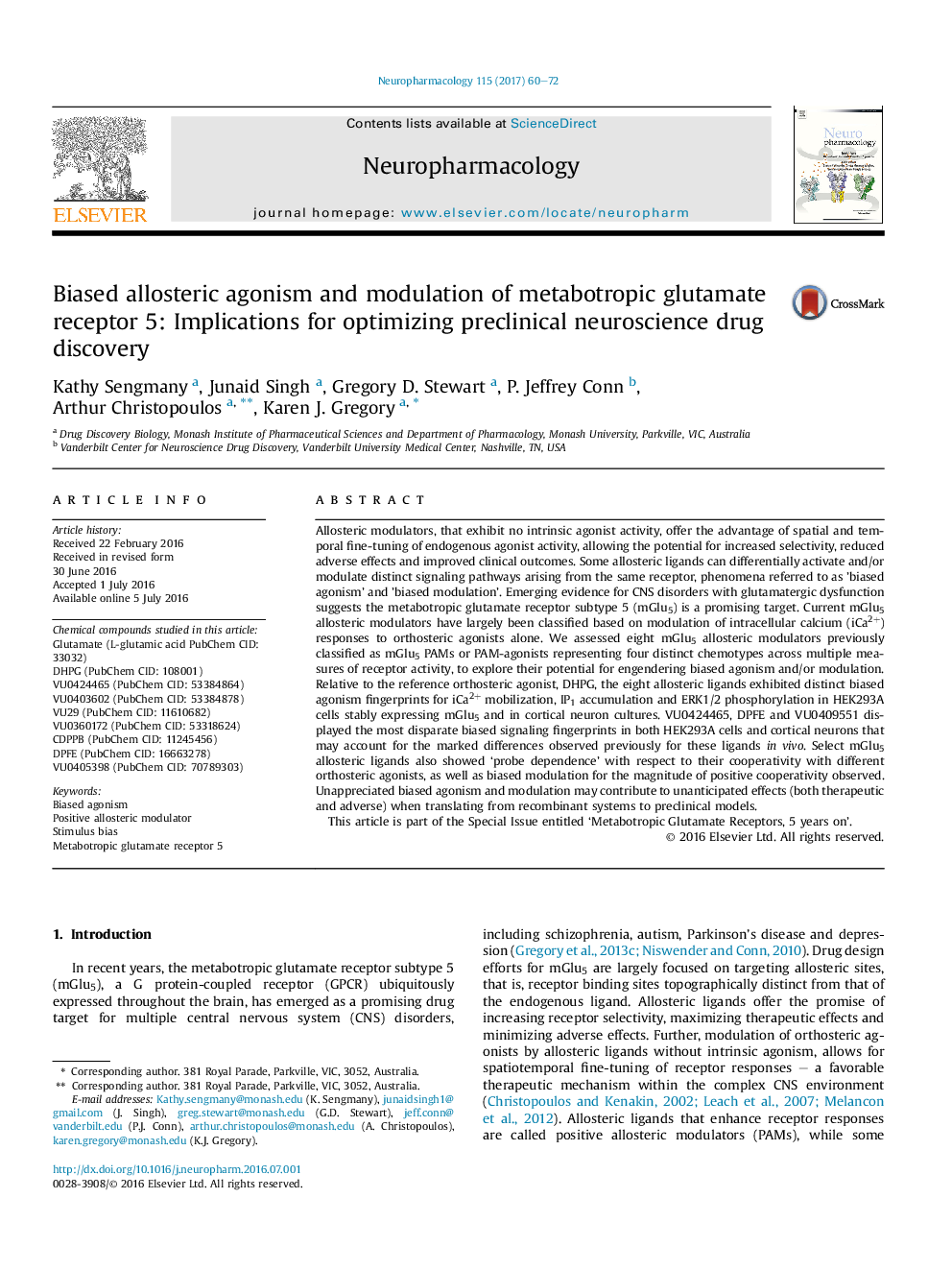| کد مقاله | کد نشریه | سال انتشار | مقاله انگلیسی | نسخه تمام متن |
|---|---|---|---|---|
| 5548993 | 1556602 | 2017 | 13 صفحه PDF | دانلود رایگان |
- mGlu5 enhancers differentially affect signaling and are biased agonists/modulators.
- Biased mGlu5 agonism is evident in both recombinant cells and neuronal cultures.
- Differences noted in vivo may be due to biased mGlu5 allosteric agonism/modulation.
Allosteric modulators, that exhibit no intrinsic agonist activity, offer the advantage of spatial and temporal fine-tuning of endogenous agonist activity, allowing the potential for increased selectivity, reduced adverse effects and improved clinical outcomes. Some allosteric ligands can differentially activate and/or modulate distinct signaling pathways arising from the same receptor, phenomena referred to as 'biased agonism' and 'biased modulation'. Emerging evidence for CNS disorders with glutamatergic dysfunction suggests the metabotropic glutamate receptor subtype 5 (mGlu5) is a promising target. Current mGlu5 allosteric modulators have largely been classified based on modulation of intracellular calcium (iCa2+) responses to orthosteric agonists alone. We assessed eight mGlu5 allosteric modulators previously classified as mGlu5 PAMs or PAM-agonists representing four distinct chemotypes across multiple measures of receptor activity, to explore their potential for engendering biased agonism and/or modulation. Relative to the reference orthosteric agonist, DHPG, the eight allosteric ligands exhibited distinct biased agonism fingerprints for iCa2+ mobilization, IP1 accumulation and ERK1/2 phosphorylation in HEK293A cells stably expressing mGlu5 and in cortical neuron cultures. VU0424465, DPFE and VU0409551 displayed the most disparate biased signaling fingerprints in both HEK293A cells and cortical neurons that may account for the marked differences observed previously for these ligands in vivo. Select mGlu5 allosteric ligands also showed 'probe dependence' with respect to their cooperativity with different orthosteric agonists, as well as biased modulation for the magnitude of positive cooperativity observed. Unappreciated biased agonism and modulation may contribute to unanticipated effects (both therapeutic and adverse) when translating from recombinant systems to preclinical models.This article is part of the Special Issue entitled 'Metabotropic Glutamate Receptors, 5 years on'.
Journal: Neuropharmacology - Volume 115, 15 March 2017, Pages 60-72
